In Pursuit of the Platonic Ideal of Apple Pie

I distinctly remember when my obsession with food began. It was August 1984 and I was 14. My family and I were traveling across Europe. In France, we stopped in Provence to visit my mom’s friend, Simone Beck, also known as Simca. Simca had written Mastering the Art of French Cooking with Julia Child.
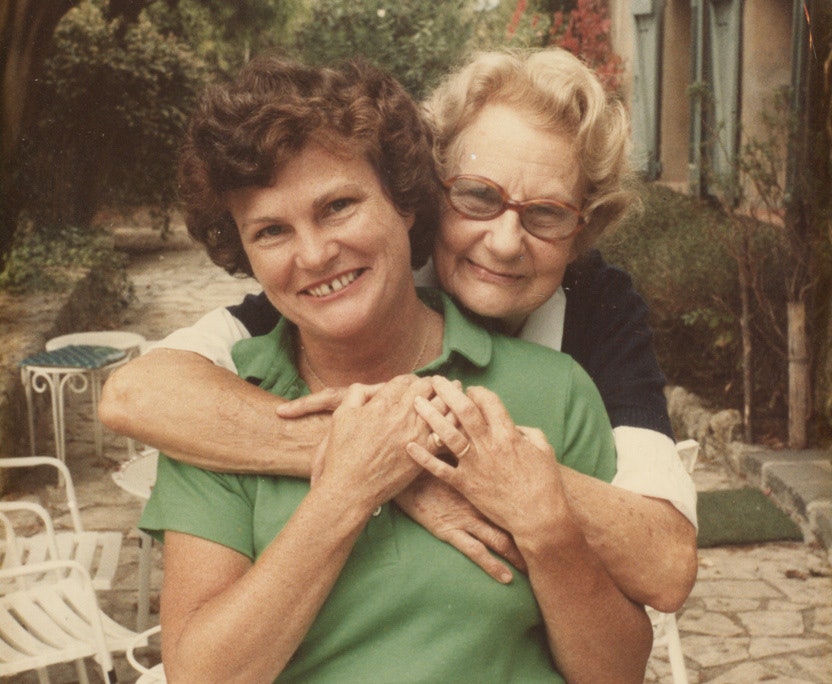
As it happened, our trip coincided with Simca’s annual cocktail party, a magnificent affair. Surrounded by strange people speaking a strange language, I focused on eating. I had my hands and my mouth full, which is why I didn’t notice when an unspeakably tall older woman joined me at the sprawling buffet. Reaching across the table to pluck a wrinkly black olive from a dish, she looked down at me kindly and said, Bon soir. It was Julia Child.
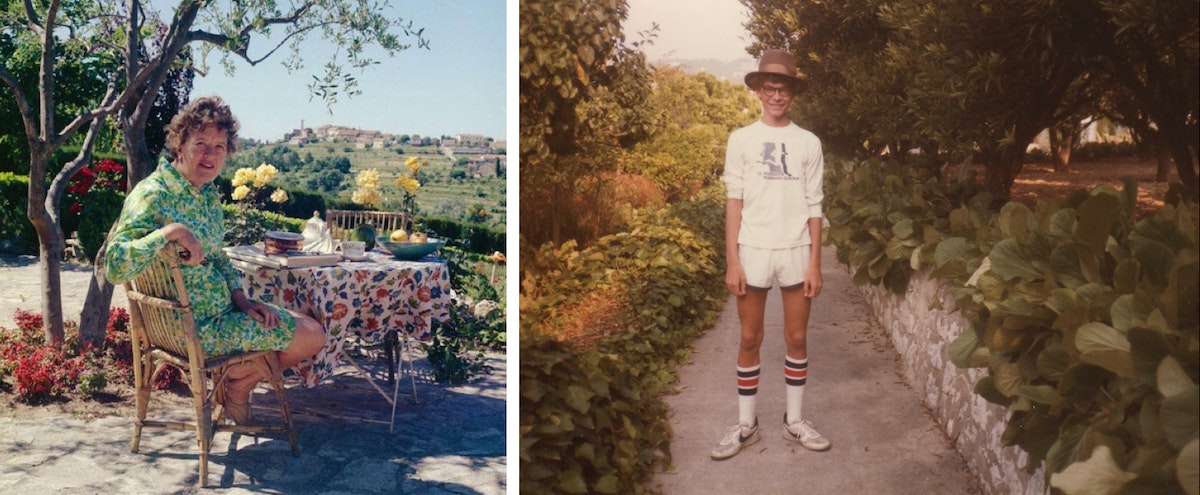
It wasn’t until after college that Julia and Simca came back into my life. My mom gave me their cookbooks as a graduation present. Living on my own for the first time, I was starting to learn how to cook—mostly to impress girls. I would peruse their books for recipe ideas and would make regular calls to my mom to explain the “why” behind a recipe. We’d talk endlessly about converting from fresh to dry herbs, how to beat egg whites into stiff white peaks, and how to make pie dough, especially for apple pie.
Growing up, my mom’s apple pies were identical year to year. They were massive, doubled-crusted affairs stuffed with at least four pounds of Granny Smith apples. And that’s exactly how I made my apple pies, too—at first.
Fast forward a decade. I was living in Bucktown, a neighborhood on Chicago’s Northwest Side, with my now wife and our two young daughters. (The “cooking to impress girls” thing worked.) We were hosting our first Thanksgiving. I had discovered a new way of forming an apple pie by folding over the edges of the pastry to keep the apples in. When I presented it to our guests I said, “Now I can make an apple pie even if I don’t have a pie plate!” After recovering from laughter, they insisted I enter the Bucktown Apple Pie Contest. I thought it was the wine talking. But in 2011, and dozens of family-pleasing pies later, I thought, “Why not?”
The Bucktown Apple Pie Contest is the largest apple pie contest in the country. It’s held at the Holstein Park Field House and features local pastry celebrities like the owners of Hoosier Mama Pie Company and Tipsy Cakes who judge over 150 eager entries.
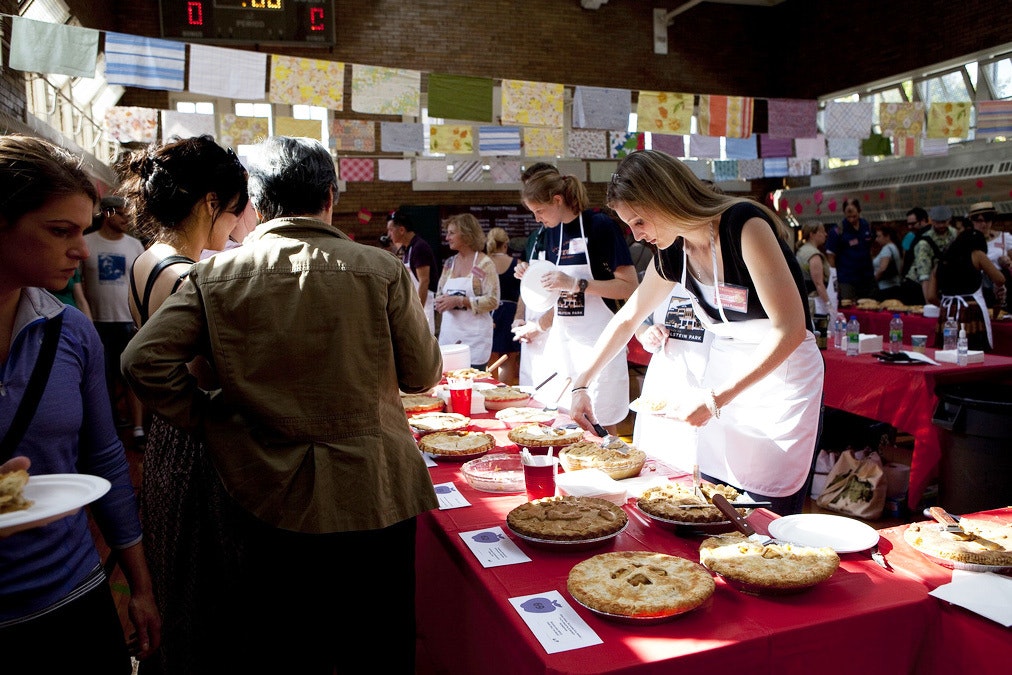
The two Field House gyms were filled with tables loaded down with pies. In the auditorium, a honky tonk band belted out tunes. I fought my way through the crowd and quickly scanned the list on the door with the semi-finalists. Not me. Oh! But, there's a list of finalists! Also, not me. Merde.
I felt like a loser. (Technically, I was a loser.) "Those were great pies," I thought. "My best possible pies..." Or were they?
When the 2012 contest rolled around, I was determined to make the Best. Goddamn. Pie. Period. It was time to break my recipe down.
I dug deep into my primary sources. Simca was an intuitive cook, confident in her methods. She was always trying new things, whereas Julia was more concerned about perfecting. She tested and re-tested her recipes, trying and tracking different techniques. I needed both Simca’s confidence to change my recipe and Julia’s discipline to learn. And I needed a hotline to my mom who has cooked everything under the sun.
After consulting with my mom, I said, “Screw the vegetarians!” and went back to lard. The crust got richer and flakier. I suspected my mom’s Granny Smith’s, while tried and true, weren’t artisanal enough, so I tried Northern Spy and Cox’s Red Pippin, which has a great name but dissolves in cooking. A pastry-chef friend recommended combining Fuji and Granny Smith apples, a thrill because it combined my favorite eating and cooking apples.

I went “off-recipe” and doubled the sugar in the pastry. Too sweet on its own perhaps, but not when paired with the tart apples and lemon of the pie. The contest demanded a double-crust, but I thought lattice tops were mundane, so my wife researched alternatives, which led to me devising a method of cutting apple-leaf shapes with a mezzaluna and trying three different knives before hitting on the perfect leaf-veining technique. When the dough leaves browned unevenly, a friend suggested glazing them individually before assembling. I taught my daughters how to peel apples in one strip and even experimented with prettier ways to core the apples
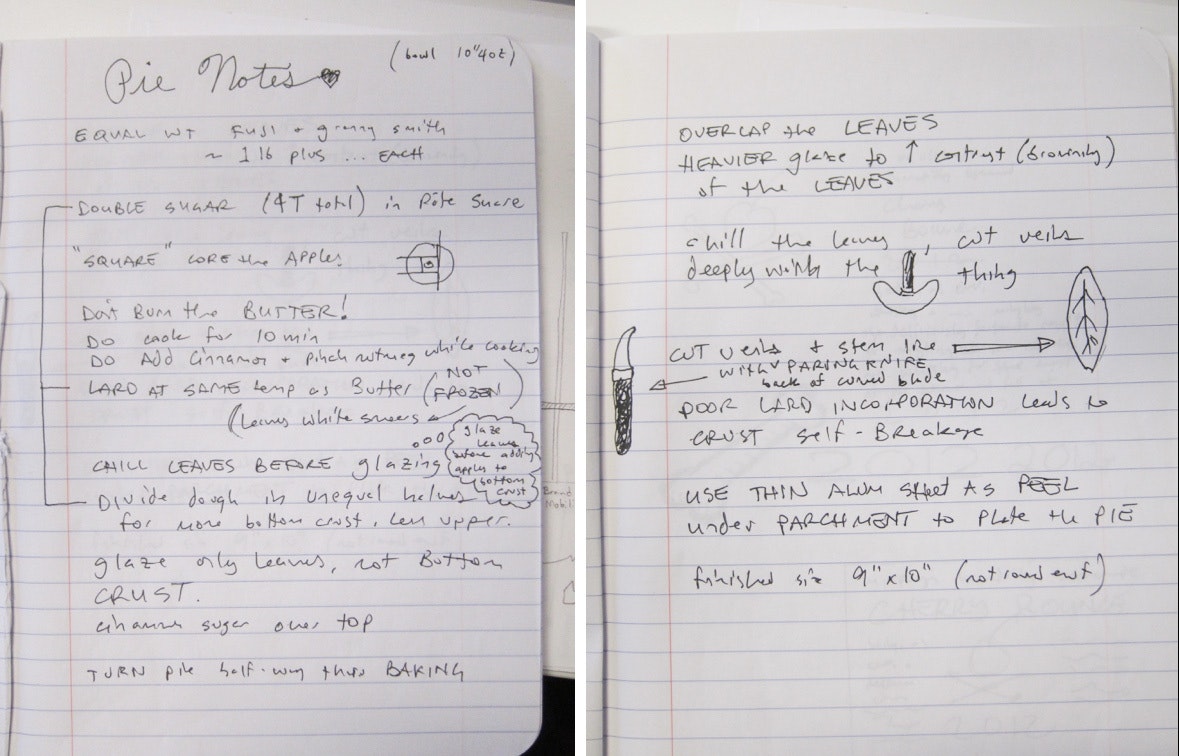
My wife described my obsession as the pursuit of the Platonic Ideal of Apple Pie.
I made pies every week for the month before the contest. While I was crazily dissecting the look, taste, and mouth feel of my pies, my family was blissfully happy. After all, every Sunday, they got pie.
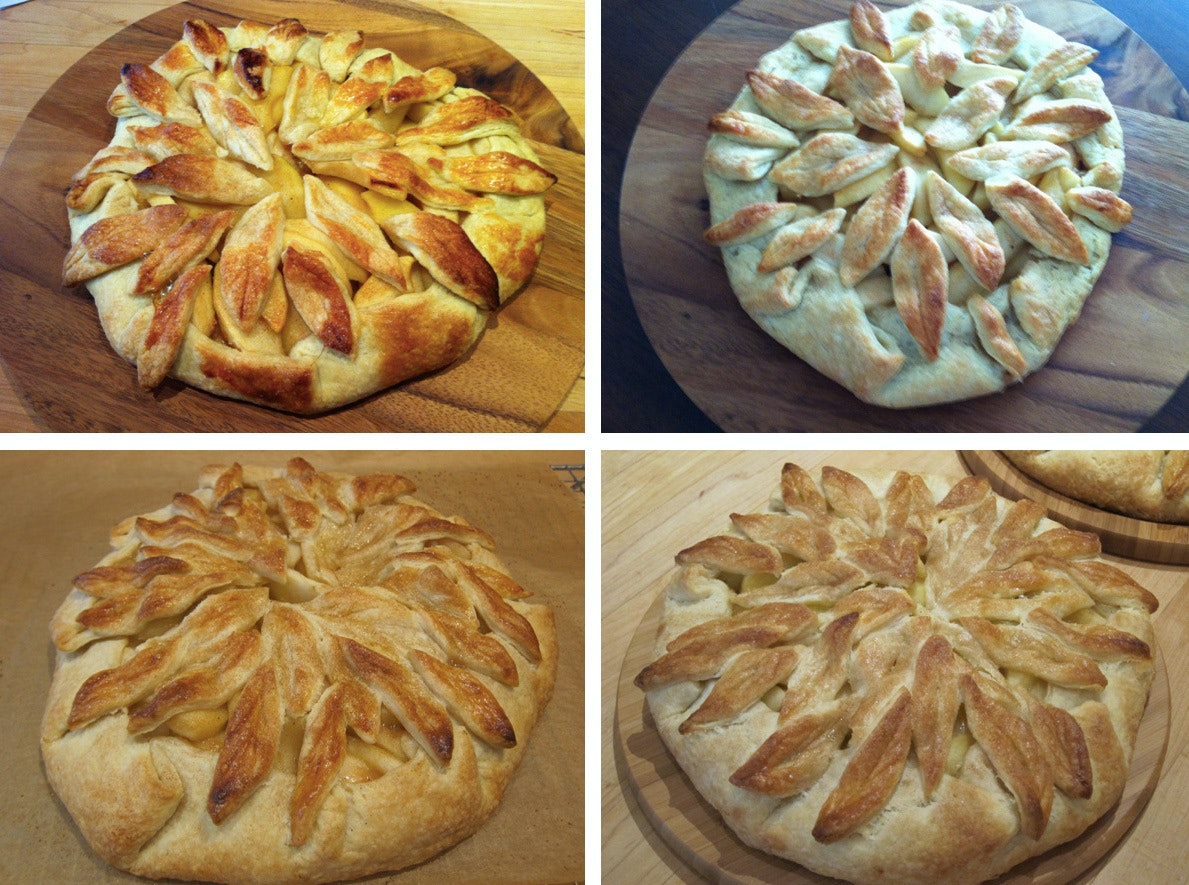
The day of the contest came. It was a Sunday in October, threatening rain. I put two pies in a basket and headed to the Holstein Park Fieldhouse. The place was a madhouse. The two gyms were filled with tables loaded down with pies. In the auditorium, a honky tonk band belted out tunes.
After the judging, I fought my way through the crowd and quickly scanned the list on the door with the semi-finalists. My name was nowhere in sight. “Really?!? After all that?!?” I thought. But wait! My pies were on the Finalists’ table, and while there were some delicious looking entries, my breath caught when I noticed more of MY pie had been eaten by the judges than any of the others.
Suddenly, the honky tonk band stopped playing and they began the announcements. My eyes scanned the big board with gloriously gaudy ribbons. The judges started to announce the winners. I stood still, unable to speak or move. They announced third place… Then second place… And then… Time stopped and I heard my name coming over the loud speakers. I stumbled up on stage and a judge pinned a blue ribbon with a little silver pie on it on my shirt.
There was noise and camera flashes and my girls were jumping up and down. There was even a TV crew with giant cameras and flood lights. Still shaking with excitement, I stumbled into the thick crowd. A young woman came up to me and asked: “Butter or lard?!” “Both,” I whispered, and she gasped with delight.
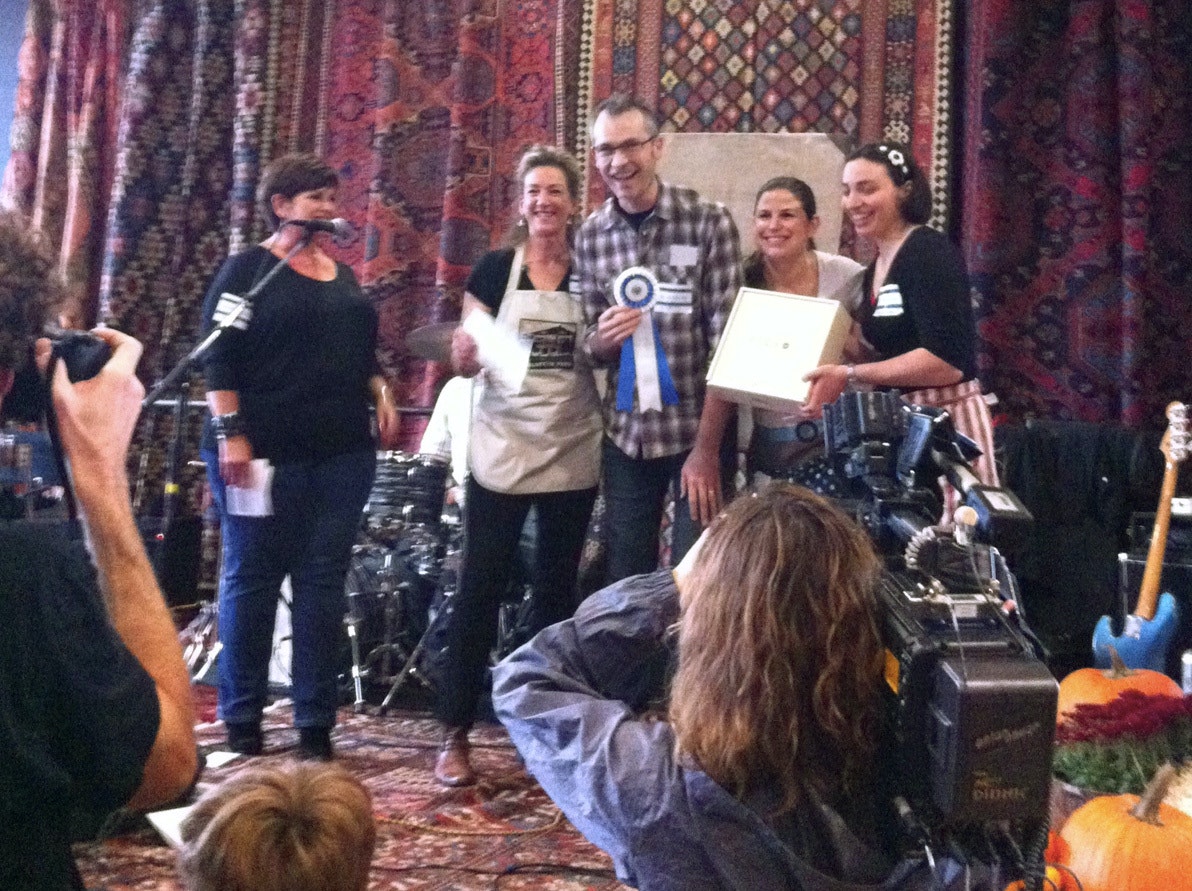
My family and I floated downstairs and across the park to our car giggling and hugging and talking about pie. The first person I called on our way home was my mom. She was so happy and proud. “Which recipe did you use?” she asked.
And I thought back to that warm August night in France, when I first met Simca and Julia, and all the subsequent hours pouring over their recipes. My pursuit of the Platonic Ideal of Apple Pie felt serious, but somehow new, which Simca would approve of. While my relentless testing of techniques was something Julia would have liked.
And then I remembered all the beautiful food my mom made for our family and her patient instructions over the phone as I slowly learned how to cook for myself.
And in that moment I felt like I had arrived. “Which recipe did you use?” my mother asked again.
“My own,” I said, smiling.
Murphy MacDonald’s Award-Winning Rustic Apple Pie Recipe
Crust
1½ c unbleached all-purpose flour
½ c unbleached cake flour
¼ t salt
4T sugar
6 oz butter (lightly salted), chilled, and diced
2 oz lard, chilled
½ c ice water
- Place dry ingredients and diced butter in a food processor bowl fitted with the steel knife. Pulse 5-6 times to break up the butter.
- Add the lard, turn on the machine, immediately and steadily pour in the ice water, and turn off the machine. Pulse 2-3 times. The dough should look like small lumps. Do not run the machine so long that the dough masses on the blade.
- Turn the mostly crumb dough onto a lightly floured surface and press it into a single mass. For the final blending, use the heel of your hand to smear egg-sized clumps of the dough crumbs together. Work through the dough until all crumbs are combined.
- Divide the dough into two unequal portions, approximately 3:2. Form the dough into discs, wrap in plastic, and refrigerate up to 3 hours or overnight.
Filling
2 lb apples, mix of Fuji and Granny Smith
1T lemon juice
¼ c sugar
2 oz butter
1/8 t cinnamon
pinch nutmeg
- Peel, core, and slice the apples ~¼”+ thick.
- Toss apples, lemon, and sugar together.
- Melt the butter in a large skillet over medium heat, add the apples, and cook for 10 minutes, stirring frequently. After 5 minutes, add the cinnamon and nutmeg and stir to combine.
- After 10 minutes, remove from heat and let rest.
Assembly
Glaze made by beating droplets of water into 1 egg white
- Preheat the oven to 375˚ F.
- Remove the smaller of the two pastry discs and roll out to 1/8” thickness.
- Using a mezzaluna or other round-blade knife, cut the dough into 16-24 apple leaves (elongated football shapes) and set them on a wax-paper lined baking sheet.
- Use the back of a paring knife blade to score veins into the leaves. Refrigerate the leaves while you prepare the glaze and roll out the bottom crust.
- Roll out the larger of the two pastry discs to 1/8” thickness, about 12” diameter or more. Use a pizza cutter to trim and clean up the edge of the rolled-out pastry. Transfer the round to a parchment-paper-lined baking sheet.
- Remove the leaves from the fridge and brush them with the egg white glaze.
- Spoon the apples (and caramel-y sauce) onto the pastry round, heaping them up to leave a 2” border all around the edge of the pastry.
- Turn up the edge of the pastry all around, lightly pinching folds together to enclose the apples.
- Beginning in the center, arrange leaves radiating out to cover the top surface of the apples.
- Sprinkle with cinnamon sugar and bake for 35 minutes.
Serve warm if possible, with vanilla ice cream.
Recipe copyright 2013 Murphy MacDonald.
Words and art

Subscribe

.svg)







